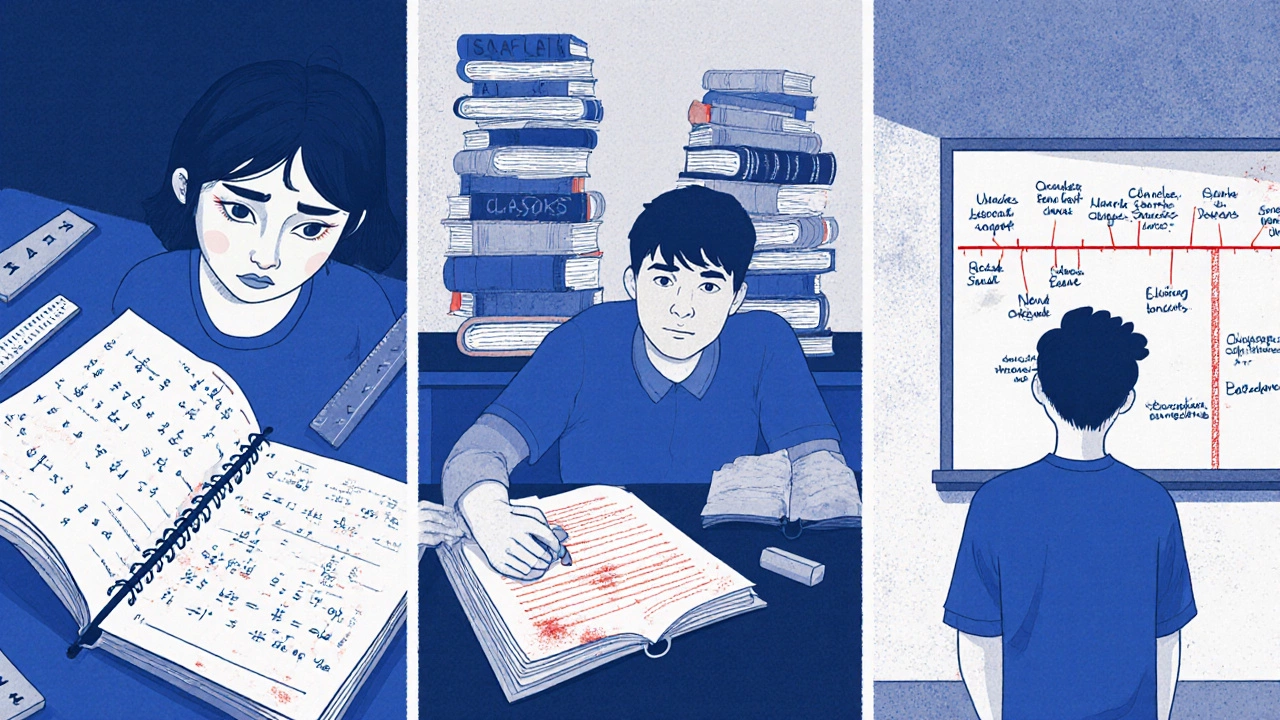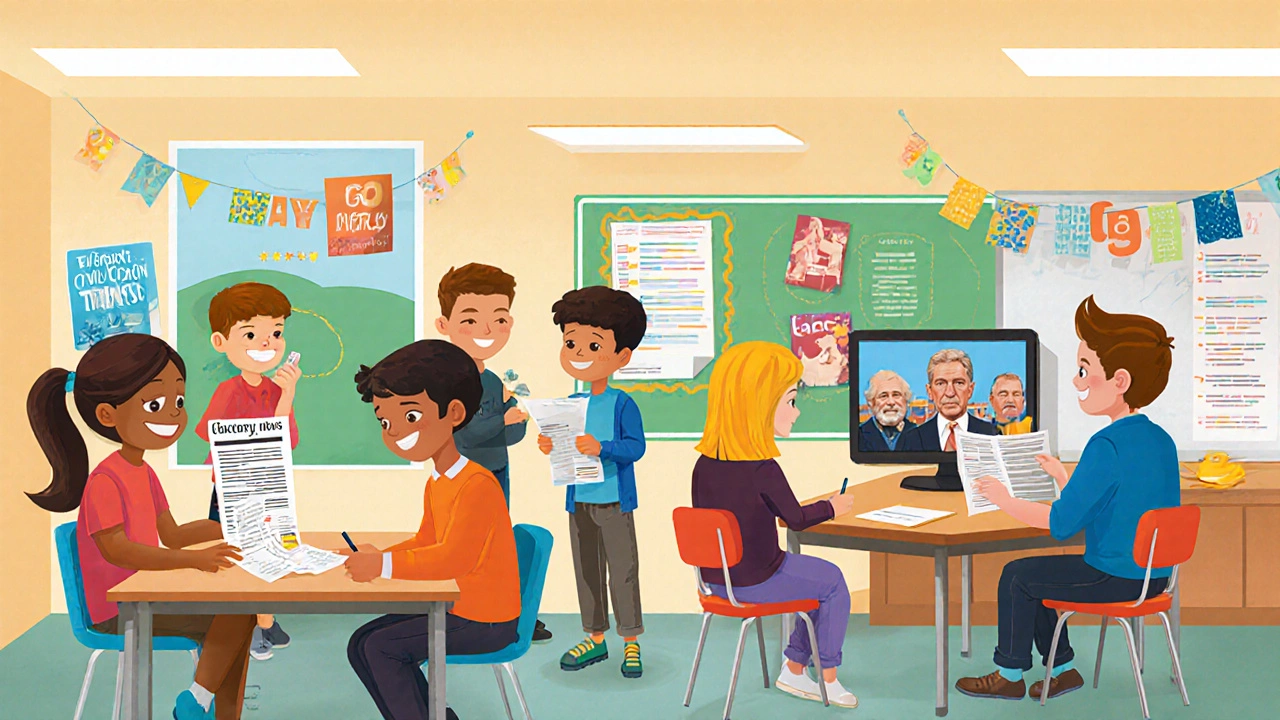Key Takeaways
- Mathematics and English consistently top the list of subjects students dislike the most.
- Primary reasons include perceived difficulty, lack of relevance, and teaching methods.
- Dislike rates vary by age group and region, but the overall trend is stable worldwide.
- Active learning, real‑world connections, and supportive feedback can dramatically improve attitudes.
- Parents and teachers who address the root causes see higher engagement and better grades.
Ever wondered which class makes students groan the loudest? When you ask a group of secondary‑school learners, the answer usually points to a handful of subjects that spark more eye‑rolls than enthusiasm. Understanding the most disliked subject the school subject that receives the highest level of student aversion in surveys isn’t just trivia - it helps educators reshape curricula and gives parents a roadmap for support.
Survey Data Shows the Top Disliked Subjects
Large‑scale surveys from 2023‑2024, covering over 120,000 students across the UK, US, Canada, Australia and India, reveal a clear pattern. Below is a snapshot from the 2024 Global Student Attitudes Survey:
| Subject | % Who Dislike | Main Reason |
|---|---|---|
| Mathematics quantitative reasoning and problem‑solving | 68% | Perceived difficulty & lack of clear relevance |
| English Language reading, writing and literature studies | 64% | Heavy reading load and abstract analysis |
| History chronological study of past events | 57% | Memorisation of dates without clear link to present |
| Science biology, chemistry and physics fundamentals | 52% | Complex terminology & lab work anxiety |
| Geography physical and human landscapes | 45% | Perceived as “just maps” and low stakes exams |
| Physical Education sports and fitness activities | 38% | Performance pressure and embarrassment |
The numbers tell a story: quantitative and language‑based subjects dominate the dislike column, while more active or visually‑oriented classes sit lower.
Why Students Hate These Subjects
Each subject carries its own set of pain points. Below we unpack the top three culprits.
Mathematics
Mathematics Mathematics involves numerical calculations, algebraic reasoning and abstract concepts is often labelled “hard” because it builds on prior knowledge. When fundamentals slip, later topics feel like a wall of symbols. Additionally, many curricula present problems without showing real‑world applications, leaving students wondering, “When will I ever use this?”
English Language
The English Language covers reading comprehension, essay writing and literary analysis demands both creativity and critical thinking. For non‑native speakers, the grammar rules and extensive vocabulary become a double hurdle. Teachers sometimes focus on literary canon that feels distant from teenagers’ lives, fueling disengagement.
History
History History studies past events, cultures and societal change often leans on rote memorisation of dates and names. When students cannot see the link between a 19th‑century treaty and contemporary issues, the subject feels irrelevant.

Impact on Learning and Future Choices
Dislike isn’t just a mood; it can shape academic trajectories. Studies from the University of Bristol (2023) show that students who rank a subject in the bottom quartile of enjoyment are 30% more likely to drop related elective options later. This cascade affects university admissions - fewer students apply for STEM or humanities tracks, skewing workforce pipelines.
How Parents & Teachers Can Turn the Tide
Good news: attitudes can be reshaped with targeted strategies.
- Connect concepts to everyday life. Use budgeting exercises for Mathematics or analyze news articles in English to demonstrate relevance.
- Adopt active learning. Flip the classroom: let students solve real problems before the lecture, then discuss solutions together.
- Provide scaffolded support. Break down complex tasks into bite‑size steps, offering checklists and model answers.
- Celebrate small wins. Quick quizzes with instant feedback boost confidence and reduce anxiety.
- Encourage choice. Allow students to select topics within a subject - e.g., a math project on sports statistics - fostering ownership.
When parents reinforce these tactics at home-like discussing the math in a grocery receipt or reading a short story together-the classroom message is amplified.

Regional & Age Differences
While mathematics tops the dislike chart globally, regional quirks exist. In the UK, GCSE students report higher dissatisfaction with English due to stringent essay standards. In contrast, US high‑schoolers point more to physics within Science as a barrier because of lab equipment limitations.
Age matters too. Primary‑school pupils often dislike subjects that require abstract reasoning (Math, Science) while secondary‑schoolers grow weary of subjects with heavy reading loads (English, History). Tailoring interventions to these age‑specific pain points yields better results.
Frequently Asked Questions
Which subject is most disliked worldwide?
Multiple large surveys consistently place Mathematics at the top, with about two‑thirds of students reporting a negative attitude toward it.
Why do students dislike English Language?
The subject blends reading, writing and literary analysis, which can feel overwhelming, especially for learners juggling grammar rules and lengthy texts that seem disconnected from daily life.
Can dislike affect university admissions?
Yes. Students who avoid subjects they dislike often miss out on required A‑levels or AP courses, narrowing their options for related degree programs.
What practical steps can teachers take immediately?
Start each lesson with a real‑world hook, use short formative quizzes, provide clear rubrics, and allow students to choose project topics that interest them.
Do dislike rates differ between genders?
Data from the 2024 survey shows a slight gender gap: girls report higher dislike for Mathematics (70% vs 66% for boys) while boys report slightly higher dislike for English (66% vs 63%). The gaps are modest but suggest the need for inclusive teaching practices.
